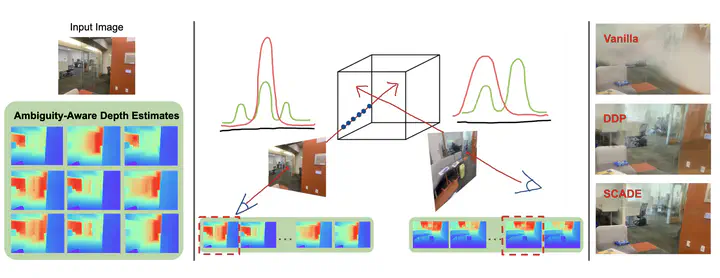SCADE: NeRFs from Space Carving with Ambiguity-Aware Depth Estimates

Abstract
Neural radiance fields (NeRFs) have enabled high fidelity 3D reconstruction from multiple 2D input views. However, a well-known drawback of NeRFs is the less-than-ideal performance under a small number of views, due to insufficient constraints enforced by volumetric rendering. To address this issue, we introduce SCADE, a novel technique that improves NeRF reconstruction quality on sparse, unconstrained input views for in-the-wild indoor scenes. To constrain NeRF reconstruction, we leverage geometric priors in the form of per-view depth estimates produced with state-of-the-art monocular depth estimation models, which can generalize across scenes. A key challenge is that monocular depth estimation is an ill-posed problem, with inherent ambiguities. To handle this issue, we propose a new method that learns to predict, for each view, a continuous, multimodal distribution of depth estimates using conditional Implicit Maximum Likelihood Estimation (cIMLE). In order to disambiguate exploiting multiple views, we introduce an original space carving loss that guides the NeRF representation to fuse multiple hypothesized depth maps from each view and distill from them a common geometry that is consistent with all views. Experiments show that our approach enables higher fidelity novel view synthesis from sparse views.
@inproceedings{uy-scade-cvpr23,
title = {SCADE: NeRFs from Space Carving with Ambiguity-Aware Depth Estimates},
author = {Mikaela Angelina Uy and Ricardo Martin-Brualla and Leonidas Guibas and Ke Li},
booktitle = {Conference on Computer Vision and Pattern Recognition (CVPR)},
year = {2023}
}